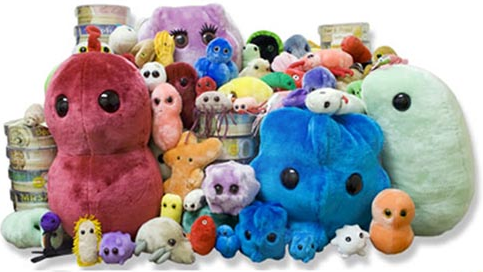|
PCR (polymerase chain reaction) is an incredibly common method used in molecular biology. I'm not sure you can find a molecular biology lab that does not posses a thermocycler (the machine that runs PCR). PCR was invented in 1983 (which makes me older than PCR.........) and enhances small segments of DNA into millions and millions of copies. It is a powerful method because you can take a very small sample and end up with a great deal of DNA.
0 Comments
Photosynthesis is my favorite metabolic pathway. I love everything about it. This post is going to take you behind the scenes of one of our really neat, non-invasive ways to monitor photosynthesis: chlorophyll fluorescence.
During photosynthesis, light excites electrons in the chlorophylls found in antenna and photosystem cores. These excited electrons are passed along and can be used in photosynthesis, however, very rarely is 100% of this energy used in this manner. Imagine for a moment that you are photosystem II and your mouth is the special chlorophyll that can pass the electrons along. Now, you have a few friends who hang out with you, they get to be the antennas (light harvesting complexes). Instead of electrons, your friends are going to pass popcorn at you. Only the popcorn that you catch in your mouth, gets to be used in photosynthesis. If your friends slowly toss one piece of popcorn at a time, you can probably catch 100% of the popcorn. But what happens when they all throw a piece at you? Or when they each start throwing handfuls? Think you could catch 100% of the popcorn? Probably not. Neither can the photosystems, which means this energy has to be released other ways.
man I really want to make a video out of this example now... but I digress.. back to business
A lot of scientists use reporter genes to quickly analyze/visualize various different cellular features or functions. A reporter gene will make a protein that is easily measured, a lot of them glow like GFP (green fluorescent protein). One can attach any promoter to the gene, letting scientists control when and/or where the protein is produced allowing reporter systems to be highly specialized.
We use a GUS-GFP reporter in our lab. GFP comes from jellyfish and glows green under special light. Simply look under the fluorescent microscope and if you see glowing green, then your gene is active. Since finding an available fluorescent scope can be hard, I prefer to use the GUS portion of our reporter gene. GUS is one of the reporter genes that we utilize in some of our transformed plant lines. GUS encodes the protein β-glucuronidase, which breaks down complex carbohydrates. Basically it takes great big "sugars" and breaks them into smaller ones. There are two main "food" sources for GUS, X-Gluc and MUG. X-Gluc will result in a visual blue color. MUG results in a small glowing particle.
Western blots are a very common method of evaluating changes in specific proteins. They rely on some basic concepts from immunology, the study of the immune system. One of the things your body does when you get sick is make antibodies Antibodies are globular proteins that have special arms that recognize one specific item, generally called an antigen. In our immune system, you have antibodies that recognize antigens you've been exposed to. For example, if you've had chicken pox you have antibodies that recognize chicken pox, but if you've never had them, you have no antibodies and are susceptible to catching them.
|
RobiSci Ruminations
Thoughts about teaching and research from an Assistant Professor at a small liberal arts college in Indiana. ArchivesCategories
All
|


 RSS Feed
RSS Feed
